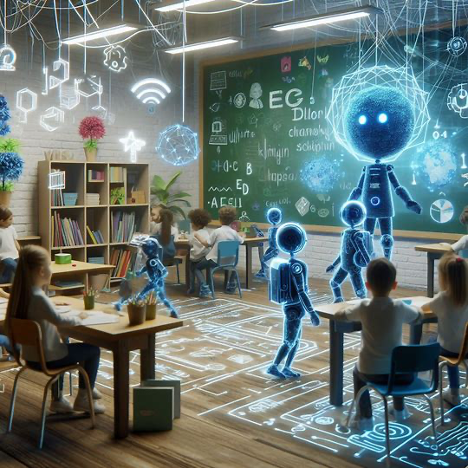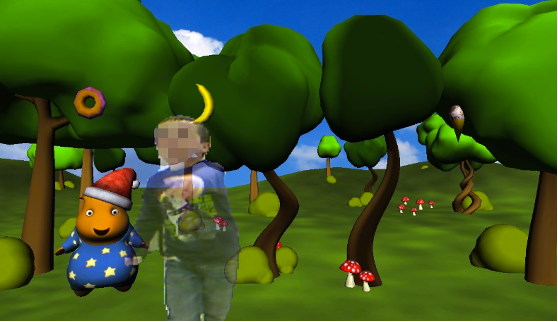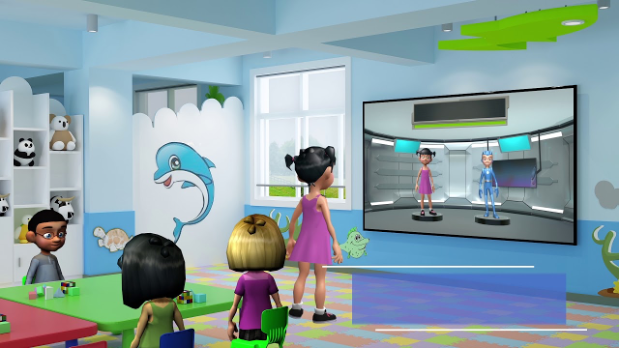Elevating Education with AI-Powered Mixed Reality: Immersive Learning for Student Growth

In the rapidly evolving landscape of education technology, the integration of artificial intelligence (AI) has been transformative; revolutionising traditional teaching methods and paving the way for truly individualised learning experiences. However, as we embark on this journey, it's essential to recognize that AI's role in education extends far beyond content generation.
This article explores how AI is shaping the future of education through mixed reality: creating immersive learning experiences that foster engagement, creativity, and critical thinking [1]. While generative AI has been playing a crucial role in developing tailored learning materials, the true power of AI lies in its ability to facilitate the creation of interactive and immersive learning environments.
Imagine a classroom where a young student interacts naturally with virtual elements using hand and body gestures within a mixed reality environment. Picture them exploring mathematical concepts by reaching out to touch virtual objects and solving problems, all within their preferred surrounding environment. This level of immersion captivates the student's attention and enhances their understanding promoting retention of key concepts. Mixed reality addresses critical issues such as student fatigue, lack of interactivity, and motivation, resulting in improved academic performance.
Such game-based immersive virtual environments, like the successful "Pico's Adventure" developed at Universitat Pompeu Fabra (UPF) in Spain, promote symbolic play and social interaction in younger children. These environments allow children to see themselves playing within the virtual world, enhancing their understanding and engagement [2].

Screenshot of the Pico's Adventure is a Kinect-based game for children with Autistic Spectrum Disorder
Today, creating immersive learning experiences doesn't require the specialized 3D cameras or expensive VR headsets. AI-powered mixed reality technology is affordable, scalable, and relevant to school learning. With just a laptop, a web camera, and an educational platform like the Kinems learning gaming platform, highly immersive learning experiences can be created.
AI technologies facilitate various functionalities, including background removal, natural interactions with virtual objects, and gesture recognition. These immersive learning environments offer significant pedagogical benefits, reducing cognitive load and enhancing interpersonal relationships among students, including those with learning disabilities [3]. In fact, there is unanimous agreement about the positive impact of AI-powered immersive game-based environments on children with autism spectrum disorders.
The Kinems learning gaming platform provides AI-powered immersive learning experiences. One such example is the Kinems Do-Like game, which is designed to strengthen a child’s gross and fine motor control, body awareness, and balance. In this game, students are immersed in a virtual environment where they replicate body movements or maintain specific positions in response to instructions provided through listening or reading. An avatar guides the children, instructing them to imitate demonstrated movements or postures.
 Screenshot of the immersive mixed-reality Do-Like Kinems learning game for body awareness and following instructions
Screenshot of the immersive mixed-reality Do-Like Kinems learning game for body awareness and following instructions
Furthermore, AI-powered mixed reality immersive learning apps offer stimulating formative assessment experiences, making students feel like they are part of the virtual world. By providing real-time feedback and insights into student progress, educators can tailor instruction to meet individual learning needs effectively and in real time.
By leveraging AI mechanics and dynamics, mixed reality learning environments can promote self-awareness, self-control, motivation, empathy, social skills, problem-solving, emotional recognition, and physical activity among ALL students.
Let's inject fun and natural interaction into the classroom, creating immersive learning experiences that enhance student engagement, growth, and well-being.
References:
[1]. Almufarreh A. Exploring the Potential of Mixed Reality in Enhancing Student Learning Experience and Academic Performance: An Empirical Study. Systems. 2023; 11(6):292.
[2]. Malinverni, L., Mora-Guiard, J., Padillo, V., Valero, L., Hervás, A., & Pares, N. (2017). An inclusive design approach for developing video games for children with Autism Spectrum Disorder. Comput Hum Behav, 71, 535–549.
[3]. López-Bouzas, N., del Moral-Pérez, M.E. Gamified Environments and Serious Games for Students With Autistic Spectrum Disorder: Review of Research. Rev J Autism Dev Disord (2023).